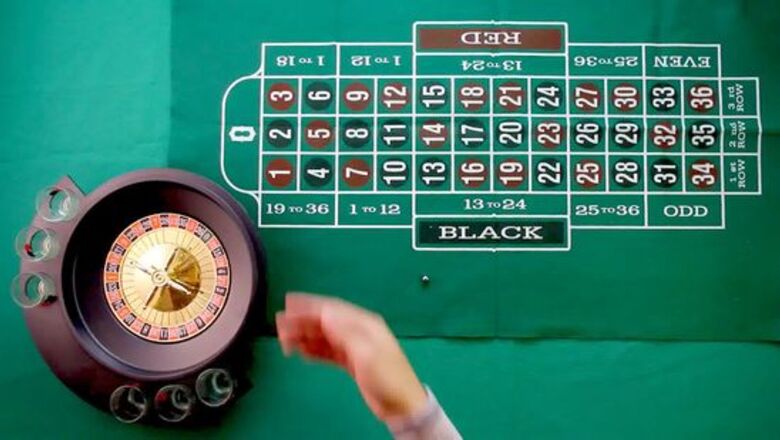
views
- To make money playing roulette, correctly guess the number or type of number the ball will land on when the dealer spins the wheel.
- In a roulette round, play starts after the dealer clears the table of the previous game. At this time, place your bets on your desired number slots.
- Start by wagering on “outside bets” (groups of numbers instead of individual digits). These bets are often cheaper and have a higher likelihood of hitting.
- Avoid using grandiose or complicated strategies for roulette, because it’s mostly a game of luck. Just have fun and know when it's time to walk away.
Roulette Basics & Betting
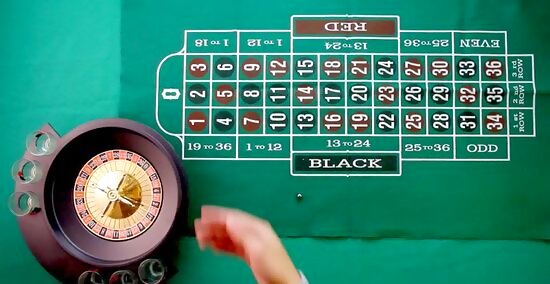
Know the game pieces and how to win. All roulette games require a wheel and a table. Both the roulette wheel and table contain 36 numbers and a 0. (On some American tables, the wheel and table also have a 00.) A dealer sends a small white ball spinning that will eventually land on 1 of the wheel’s numbered slots. Place your desired bet on the table, correlating with the slot on the wheel that you think the ball will land in. If you predict the slot correctly, you get paid. In addition to numbers, roulette tables offer a few other betting options including: 1-18 19-36 Even Odd Black Red 1st 12 (which counts as a bet for all numbers 1-12) 2nd 12 (which counts as a bet for all numbers 13-24) 3rd 12 (which counts as a bet for all numbers 25-36)
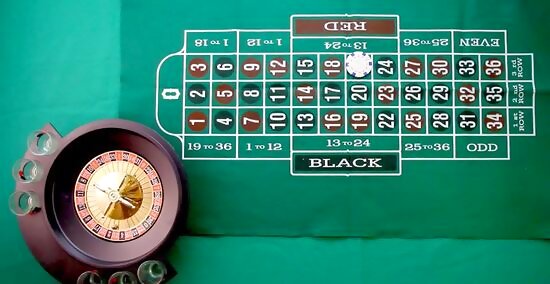
Learn the different "inside" bets. You win at roulette by correctly betting on the number or type of pocket in which the ivory ball lands. Placing an "inside" bet (a bet on specific numbers as opposed to a large group of numbers) offers lower chances of winning, but generally has higher paying odds. Types of inside bets include: Straight up betting on 1 number (which pays 35 to 1) Split betting on 2 numbers (which pays 17 to 1) Street betting on 3 numbers (which pays 11 to 1) Corner betting on 4 numbers (which pays 8 to 1) 6-line betting on 6 numbers (which pays 5 to 1) To place a 3-number bet with just 1 chip, place the chip on the end of any "street" (row of 3 numbers) on the table map. To place a 6-line bet with just 1 chip, place the chip on the edge of 2 adjoining streets. American roulette also offers the 5-number bet which covers 0, 00, 1, 2, and 3 (and pays 6 to 1) as well as the Row 00 bet which covers 0 and 00 (and pays 17 to 1).
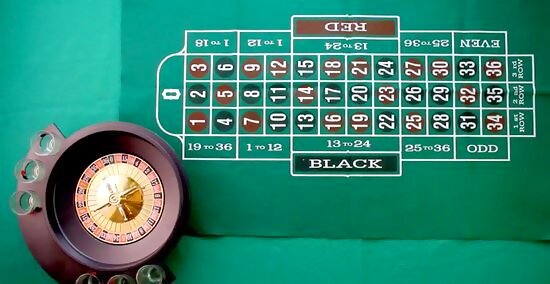
Memorize the different "outside" bets. Outside bets do not involve specific numbers, but large groups of numbers like evens & odds, highs & lows, and reds & blacks. To place an “outside” bet, place your chip on the table on the outside of the number map. While making an “outside” bet offers lower paying odds, your likelihood of winning is much higher. “Outside” bets include: Color betting red or black (which pays 1 to 1) Even or odd betting (which pays 1 to 1) Column betting on 12 numbers in a column (which pays 2 to 1) Dozen betting (1st 12, 2nd 12, etc.) (which pays 2 to 1) High or low bets (1-18, 19-36) (which pay 1 to 1)
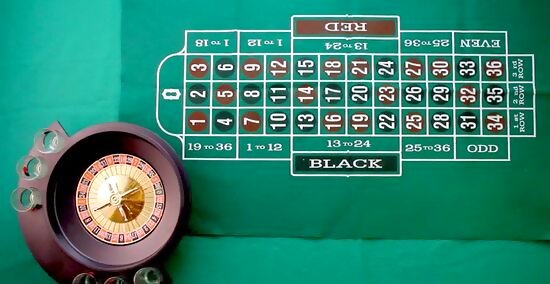
Recognize the “house edge” and how it affects your odds. Know that at every roulette table (and at every game in the casino itself), the “house” (the casino) always has an edge. The house’s advantage comes from its additional number 0 (which offers the house an additional 2.7% chance of winning, compared to the players). There are theories as to how you can improve your odds, but they don't work. However, there are some variants that change how the favor lies: Some French tables will employ rules that generally help out the players. The "La Partage" and "En Prison" rules apply to outside “even money” bets (bets that offer a 1-1 payout like odd or even, black or red, and low or high); they also apply when the ball lands in the 0 slot. In the En Prison and La Partage rules, players only lose half of their bet. However, players cannot leave their bet on the table for another spin with the La Partage rule. If a player loses, they can collect half their bet in the La Partage rule, or leave half their bet on the table for the next spin with the En Prison rule. At American tables, the "00" slot increases the casino's advantage even more. On a roulette table with a single 0, the casino has an advantage of 2.7%. On a roulette table with an additional 00, the casino has an advantage of 5.26%.
Playing the Game
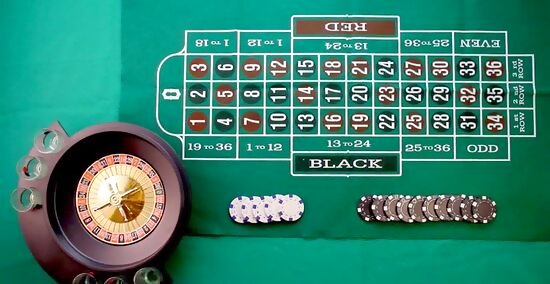
Choose a roulette table within your budget. Each roulette table carries a placard describing the minimum and maximum bets allowed. (For example, one table might read: "Roulette. $5 minimum inside bets, $5 minimum outside bets. $1,000 maximum outside bets, $100 maximum inside bets.") Table maximums are usually lower for inside bets, because of the higher payoffs offered. Set a budget before you hit the roulette tables so you know what your maximum betting amount is. Then, choose a table with a minimum bet that will allow you to play multiple games within your budget. Each table will also have a board that highlights the previous numbers the ball has landed on. Do not be tempted to calculate your odds based on where the ball has landed before. With each spin, the probability of the ball landing in each number remains the same. It's the same wheel and the same ball every time.
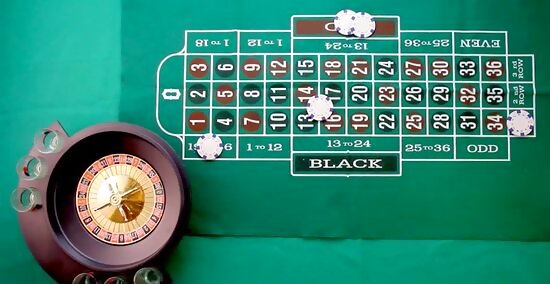
Watch what's happening at your table to improve your bets. You can practice all kinds of roulette strategies, but, because the game is so luck-based, your best chance at winning is to pay close attention to the dealer, table, and wheel itself. Keep your eyes peeled for patterns and habits. Some dealers release the ball at exactly the same angle and velocity during a specific session. As the dealer releases the ball, the same numbers pass every time, increasing the chances that the ball ends up resting on the same portion of the wheel repeatedly. A wheel can go off-kilter. However, casinos are pretty good at spotting this. There's really no way to tell if a wheel is off balance unless you monitor 1000+ spins.
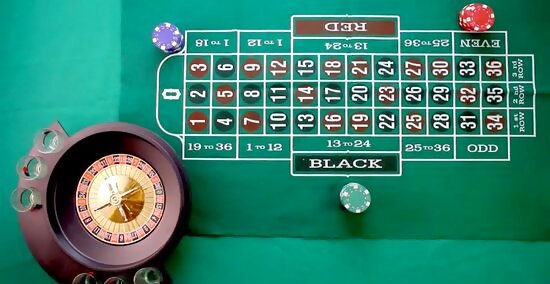
Purchase a roulette chip from your dealer. Once you’ve decided to play at a roulette table, talk to the dealer (or “croupier”) about buying a roulette chip. The dealer will ask what denomination you want to designate for each chip. If you're at a $5 minimum table, you could get your chips at a $1 or $100 value (or anywhere in between). Once you've decided how much money you’d like to assign, the dealer will mark your colored chip to indicate its value and hand it to you. In roulette, you do not play with normal casino chips. Each person gets a specific color of chips to help differentiate between bettors. Even spouses are recommended to separate during most roulette games. Roulette chips have no value away from the roulette wheel. When you're ready to leave the table, place all your remaining roulette chips on the table and tell the dealer you'd like to cash out. They will give you normal casino chips in return.
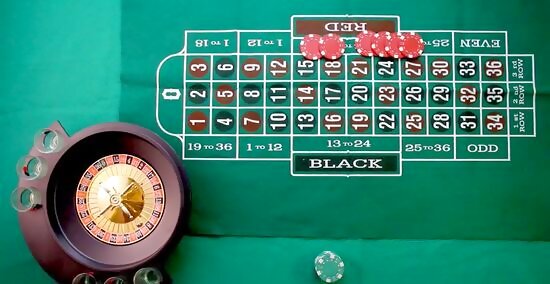
Know the procedure of a roulette round. Understanding how roulette rounds work helps you optimize your time to place a winning bet. After the dealer clears the table and pays the winners, play begins for the next round. The dealer will pause for a bit, giving everyone time to decide on their bets. Then, the dealer will spin the wheel and throw the ball, often announcing “no more bets!” to signify betting for the round is closed. Once the ball settles, the dealer places a marker on the winning number (or winning chips). Losing bets get cleared off the table first. Then, the winners get paid and the process repeats.
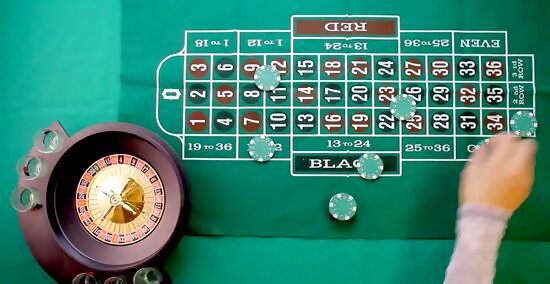
Place your bets on their corresponding spots. After the dealer has cleared off the table and begun a new round, place your chip (or chips) on the table, next to their corresponding number slot(s). The first six bets are placed on the pockets numbered 0 to 36 on the game table. If you want to bet on a column, place your bets on the empty pocket under the 3 columns. To bet a dozen, choose the pocket P 12 for the first 12 numbers, M 12 for the 12 middle numbers, and D 12 for the last 12 numbers. Finally, when you want to bet on the outside bets, use the red, black, even, odd, high or low pockets. If you win a roulette round, cash out your chips as quickly as possible. Then, continue betting with your predetermined budget. Do not dip into your winnings for future bets. Some players like to watch the other players, either hoping the others know something they don't or doing the opposite of their opponents' actions. You can try this, but it won't improve your odds more than coincidentally. When playing multiple rounds, try using the low-risk, low-reward Fibonacci betting system. To bet with this strategy, only make 50/50 outside bets (odds or evens, reds or blacks) wagering numbers in the Fibonacci sequence (1, 1, 2, 3, 5, 8, 13, 21, 34, 55, 89) . For example, at first you’d wager 1 dollar, then another dollar, then 2 dollars. Every time you win, go back 2 numbers for your next wager. Avoid using high-risk, high-reward betting strategies like the Martingale. The Martingale has you double your amount on a winning bet until you lose. While it can bring high payouts, it’s more likely you’ll just lose your money.















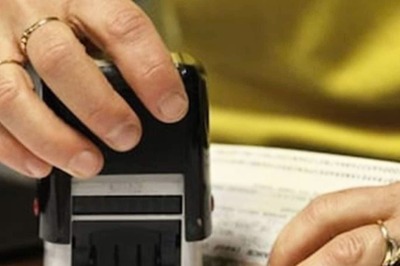



Comments
0 comment